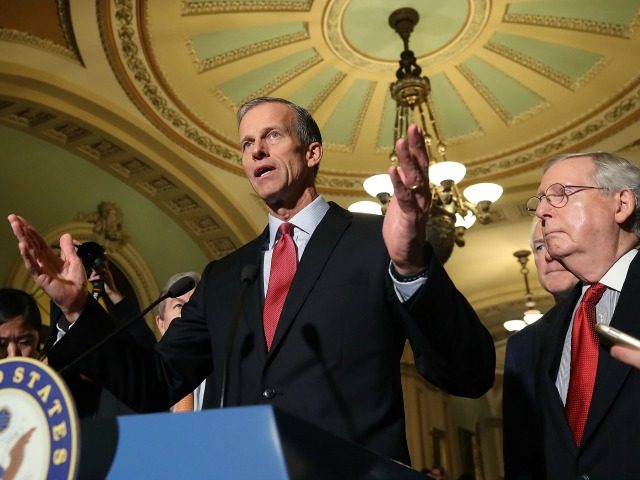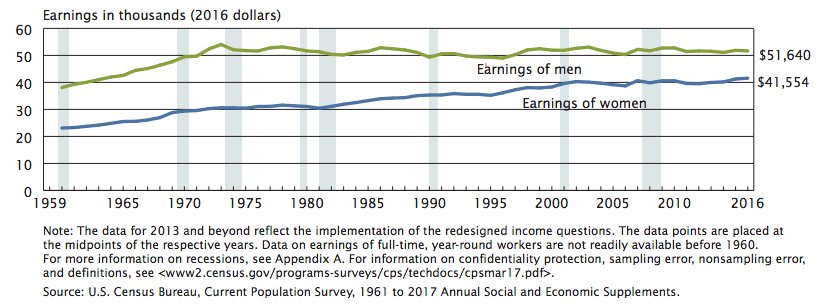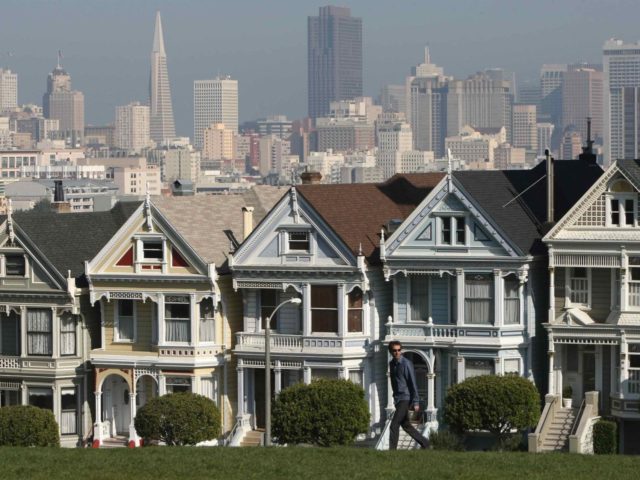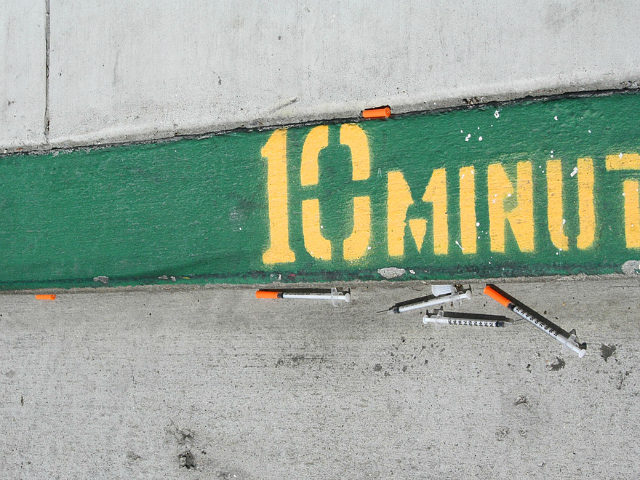every american (legal) is only one paycheck and 12 illegals away from homelessness!
LA'S HOMELESS TAX MADE HOMELESSNESS WORSE
February 20, 2018

The Los Angeles political establishment, the media and everyone who listened to them insisted that raising taxes to spend on the homeless was the answer. But subsidizing a social problem never works.
L.A. County's homeless problem is worsening despite billions from tax measures
Despite drilling a big hole in the boat, it continues to sink.
Los Angeles County's homeless population is increasing faster than the supply of new housing, even with the addition of thousands of beds in the last two years and millions of dollars beginning to flow in from two ballot measures targeting the crisis
It's almost as if the problem worsens because you keep throwing money at it. Reasonable people would draw sensible conclusions. Lefties will just insist that more money needs to be spent until every single last homeless wanderer is living in Los Angeles.
The 2015 homeless count, on which the previous analysis was based, put the number of people living on the streets across the county at just under 29,000.Last year, the annual January count raised the number of unsheltered homeless people to nearly 49,000 — almost three-fourths of all homeless people.
So either a whole lot of people, became homeless. So many that they represented 2/3rds of the original count. Or the numbers increased because the problem was being subsidized. And that incentivized new homeless "clients" and the non-profits and government agencies who cash in on them.
The earlier report projected a reduction of 14% each year. If that had occurred, the total homeless population — including unsheltered and sheltered — would have dropped to 41,323 last year.Instead, it climbed to nearly 59,000. The results of this year's count will be released in the spring.
The results will increase. And go on increasing as the left repeats its seventies experiments in subsidizing social problems. And the increases will always be attributed to gentrification, income inequality and all the usual suspects. And the solution will always lie with more taxes.
So here we go.
The report showed that officials two years ago far underestimated how much new housing would be needed when they asked city and county voters to approve the tax measures.As a result, a $73-million annual shortfall in funding for the county's comprehensive homelessness program could more than triple, a Times analysis of the report found.
Of course. The problem is always not enough money. Just ask LAUSD. The more money you throw at the problem, the more is needed.
Providing permanent housing for the county's chronically homeless population would require more than 20,000 new units, about 5,000 more than projected two years ago, the report said.
Come back next year and it'll be 30,000 or 10,000 more than projected.
In a departure from its previous report, the Los Angeles Homeless Services Authority provided no analysis of costs associated with the needed housing in the revision released last week.
Why bother? It's whatever the market will bear.
Based on estimates in the 2016 report, The Times calculated the additional costs could be about $200 million, pushing the annual shortfall to more than $270 million.
$270 million. $2.7 billion. It's just money.
And if you really want to "solve this crisis", you'll pay your "fair share" unless you're an unfeeling monster who hates government bureaucrats and their non-profit allies profiting from the social problems they create.
Homeless advocates considered the quarter-cent sales tax to be the best approach to raising money for homelessness, but the $355 million it is expected to generate each year falls short of meeting the county program's estimated annual cost of $428 million.
$428 million. $4 billion. $400 billion. Who's counting.
When the supervisors review the budget in June they'll face hard choices.
The only hard choices will involve allocating the contracts to save the homeless.
THE
DEMOCRAT PARTY and the RISE OF THE MEXICAN FASCIST WELFARE STATE and MEX
FASCIST PARTY of LA RAZA “The Race” NOW CALLING ITSELF UNIDOus.
http://mexicanoccupation.blogspot.com/2018/02/larry-elder-who-said-this-about-illegal.html
Not long ago, both Democrats and Republicans advocated safe, secure borders and an immigration policy of admitting immigrants who benefit, not burden, Americans. Que pasó? ….. LARRY ELDER – FRONT PAGE MAG
THE
TRUMP AMNESTY TO LEGALIZE MEXICO’S LOOTING AND KEEP WAGES FOR LEGALS DEPRESSED
The
draft amnesty will also serve as complete proof in November that Trump’s
voters’ wrongly placed their trust in his August 2016 promise to block any
amnesty: (SEE LINK).
http://mexicanoccupation.blogspot.com/2018/01/the-trump-amnesty-to-legalize-mexicos.html
"But
the taxpayers’ costs also act as a $26 billion stimulus for business which will
provide the migrants with medical services, apartments, entertainment, food,
and transport. The continued inflow of the 4 million chain-migrants, however,
is a vastly greater benefit for business and burden for American workers."
NEIL MUNRO
AMERICA:
MEXICO’S WELFARE STATE
… and in
exchange we get 40 million Mexican flag wavers, homelessness, a housing crisis,
heroin & opioid crisis and jobs for legals crisis…. ALL THANKS TO THE
DEMOCRAT PARTY
http://mexicanoccupation.blogspot.com/2013/08/how-cheap-is-staggering-cost-of-mexicos.html
“Thirteen years after welfare
reform, the share of immigrant-headed households (legal and illegal) with a
child (under age 18) using at least one welfare program continues to be very
high. This is partly due to the large share of immigrants with low levels of
education and their resulting low incomes — not their legal status or an
unwillingness to work. The major welfare programs examined in this report
include cash assistance, food assistance, Medicaid, and public and subsidized
housing.” Steven A. Camarota
HOMELESS IN AMERICA
WHERE 40 MILLION ILLEGALS HAVE JOBS, AND SUCK IN BILLIONS IN WELFARE!
With last month’s publication in the opinion section of The Oregonian of an anti-homeless rant
by Columbia Sportswear president and CEO Tim Boyle, an effort has begun to
shift the response to city's the homeless crisis to a more open policy of
criminalization.
AMERICA: ONE PAYCHECK AND TWELVE
ILLEGALS AWAY FROM HOMELESSNESS!
http://mexicanoccupation.blogspot.com/2017/12/rick-moran-los-angeles-mexicos-second.html
A dashcam video of downtown Los Angeles on
Christmas day reveals a stunning sight: hundreds of tents and lean-tos on the
sidewalks that serve as shelter for the homeless. The scene is reminiscent of a
third-world country. RICK MORAN / AMERICANTHINKER
com
HOMELESS CRISIS IN LOS ANGELES,
MEXICO’S SECOND LARGEST
CITY, WORSENS BY THE DAY…. Approximates the great depression
http://mexicanoccupation.blogspot.com/2017/11/homeless-crisis-in-mexicos-second.html
93% of the murders in Los Angeles are by
Mexicans
HOMELESS AMERICA’S HOUSING CRISIS as 40
million illegals have climbed U.S. open borders.
http://mexicanoccupation.blogspot.com/2017/12/homeless-in-america-hundreds-of.html
EVERY AMERICAN (Legal) only one paycheck and
two illegals away from living in their cars.
GOP Senators Offer Wall Funding if Trump Kills Populist Immigration Reforms

Mark Wilson/Getty Images
Business-first Republicans Senators are pushing a plan to keep the 680,000 DACA illegals in the workforce — and simultaneously block President Donald Trump’s popular reforms of immigration law.
The plan would provide work-permits to at least 680,000 illegals but would also provide Trump with a $25 billion “Trust Fund” for construction of a border wall.
The proposal by South Dakota’s John Thune, Ohio’s Rob Portman, and Kansas’ Jerry Moran, likely has support from many business-first Republicans, especially GOP Senators in labor-intensive agricultural states. The proposal likely will be pushed into the 2018 budget debate as Trump’s deputies press for $1.6 billion in 2018 border-wall construction funds.
A statement from the Senators buried the economic payoff under Democratic-style praise for the 3 million blue-collar illegal-immigrant ‘”Dreamers”:
This commonsense legislation would fulfill several urgent short- and long-term needs, which include extending permanent protection to today’s Dreamers who are facing an uncertain future and finally taking a meaningful step toward enhancing border security, which is a priority for the president and a majority of us in Congress,” said Thune…“Our nation has long valued diversity – of thought, of ideas, of background – and we must continue to foster this American spirit,” said Moran. “Congress has a responsibility to develop a humanitarian plan that cares for the children who were brought to the United States by their parents through no choice of their own and at the same time protects our homeland.
That amnesty-for-a-wall plan offers big gains for business — more cheap labor to keep Americans’ wages low, less debate over cheap-labor immigration, and a strategy to block Trump’s several pro-employee reforms.
The Trump reforms are hated by business groups because they gradually shrink the supply of new legal immigrants and nudge up Americans’ wages.
For example, business groups have sharply opposed Trump’s plan to curtail legal immigration via the visa-lottery and chain-migration reforms. In the February 15 immigration-reform votes, for example, eight GOP business-first Senators voted for a Democratic-backed double-amnesty plan, and 14 GOP Senators voted with Democrats against Trump’s four-way combination of an amnesty, a border wall, asylum reforms and legal immigration cuts.
Thune and Moran both voted against Trump’s wage-booting reforms.
If Trump takes the new amnesty-for-wall deal, he will give up most of his bargaining power — the offer of amnesty to illegals — and so lose any chance of passing the wage-boosting immigration reforms which got him elected in 2016.
Moreover, if he takes the deal, he will be less able to campaign for immigration reforms during the 2018 midterm elections, and will instead just have to play up the benefits of the tax cuts. That is a big benefit for business groups who do not want GOP candidate to campaign for immigration reform in November. Basically, the proposed deal would allow the business community to push immigration reformers under the table for several years.
Many Democratic legislators, will favor parts of the business-first amnesty-for-a-wall plan.
Democrats will support the business-Senators’ rejection of Trump’s proposal to reform the asylum laws. Those laws now allow hundreds of thousands of Central American migrants to walk through the existing border wall. Democrats will also support the rejection of Trump’s proposed reform to chain migration and the visa lottery.
Democrats, however, will want to include many additional illegals in the business-first wall-for-amnesty plan.
Also, Democrats want to put the illegals on a path to citizenship. Once the illegals become citizens, they can vote for Democrats and use the chain-migration laws to win citizenship and voting rights for millions of additional migrants.
However, GOP Senators strongly oppose citizenship for illegals because they recognize it expands the Democrats’ ballot-box power. But a deal that offers work-permits to illegals will allow them to work but not vote, which helps GOP donors and GOP Senators.
Four million Americans turn 18 each year and begin looking for good jobs in the free market.
But the federal government inflates the supply of new labor by annually accepting roughly 1.1 million new legal immigrants, by providing work-permits to roughly 3 million resident foreigners, and by doing little to block the employment of roughly 8 million illegal immigrants.
The Washington-imposed economic policy of economic growth via mass-immigration floods the market with foreign labor, spikes profits and Wall Street values by cutting salaries for manual and skilled labor offered by blue-collar and white-collar employees. It also drives up real estate prices, widens wealth-gaps, reduces high-tech investment, increases state and local tax burdens, hurts kids’ schools and college education, pushes Americans away from high-tech careers, and sidelines at least 5 million marginalized Americans and their families, including many who are now struggling with opioid addictions.

Bay Area Income Inequality Among Highest in America

Justin Sullivan / Getty
Brookings Institution research confirms that the San Francisco Bay Area has the highest income inequality levels in the United States.
Brookings develops income inequality multiples for America’s 100 largest metropolitan areas by dividing the income earnings of the top 5 percent of households by the income earnings of the lowest 20 percent of households.
In 2014, the San Francisco metropolitan area was the only Northern California region to be in the nation’s top 10 for income inequality. With the top 5 percent of households making an average of $353,483, and the lowest 20 percent of households making $31,761, the income inequality ratio was 11.1, the third-highest income inequality in America.
Two years later, in 2016, San Francisco’s income inequality was still the third highest, at a ratio of 11. But the San Jose metropolitan area had jumped from the 17th highest rate of income inequality in 2014 to the 6th highest rate in 2016. With the top 5 percent of households making an average income of $428,363 and the lowest 20 percent of households making an average income of 40,807, the income inequality ratio was 10.5.
The San Jose metropolitan area’s top 5 percent of household incomes were second only to Bridgeport, Connecticut, with a household income average of $485,657. But San Jose’s lowest 20 percent was the highest average metropolitan household income for the nation’s lowest 20 percent of household incomes.
The Bay Area’s combined two metropolitan areas encompass the counties of San Francisco, San Mateo, Alameda, Contra Costa, Marin, and Santa Clara. With a combined income inequality ratio of about 10.8, there are no two adjoining metropolitan areas that come anywhere close to the inequality of the Bay Area. The gap between the highest earning group and the lowest group of earners expanded by a stunning $54,000.
In 2015, PolitiFact found that of the Brooking’s study’s 10 most unequal cities, 9 had Democratic mayors, including “Atlanta, San Francisco, Boston, Washington, New York, Dallas, Chicago, Los Angeles, and Minneapolis. Only one, Miami, has a Republican mayor.”
Report: Downtown San Francisco Littered with Drug Needles, Piles of Feces
One of the most expensive U.S. cities to live in is on track to become one of the dirtiest cities in the world, an investigation revealed.
Journalists with NBC Bay Area released a report which surveyed 153 blocks in downtown San Francisco and found some shocking results: more than 300 piles of feces and 100 drug needles lined the streets of downtown San Francisco, including in areas near upscale hotels and government buildings.
The report brought so much attention to the issue that one website displayed an interactive poop map to shed light on homelessness in San Francisco.
One infectious disease expert told NBC Bay Area that the streets of San Francisco are on par with or worse than those of developing countries.
“The contamination is … much greater than communities in Brazil or Kenya or India,” said Dr. Lee Riley, a UC Berkeley professor.
Riley added that the slums in developing countries often have long-term housing for the poor, who make attempts to maintain their surroundings. He argued that the poor in San Francisco do not feel the need to clean up after themselves because of a lack of long-term housing.
City officials, however, say the solution to the problem is not through long-term housing, but short-term housing for the homeless.
City Supervisor Hillary Ronen said that the city needs to add more temporary housing in shelters for the homeless to combat the problem instead of using resources to find permanent housing solutions for the homeless.
“We need to find a source of revenue,” said Ronen. “Whether that’s putting something on the ballot to raise business taxes or taking a look at our general fund and re-allocating money towards that purpose and taking it away from something else in the city.”
Los Angeles report on homelessness reveals widening funding gap
By Adam Mclean
Los Angeles report on homelessness reveals widening funding gap
By Adam Mclean
23 February 2018
A recent report from the Los Angeles Homeless Services Authority (LAHSA) shows that homelessness in Los Angeles is growing at a much higher rate than was previously thought, outstripping the already limited funding allocated to programs aimed at aiding the homeless.
Existing shelter programs are trailing their housing targets by about 20 percent, as set in 2015 when several ballot initiatives—“Measure H” and “Proposition HHH,” purporting to reduce homelessness were passed. The 2015 targets behind the measures were calculated to keep pace as more people fell into homelessness, but rather than decreasing homelessness by the planned 14 percent annually, the Los Angeles homeless population has grown from 44,000 in 2015 to 59,000 in 2017. The programs’ existing funding gaps are being further strained by this surge in homelessness.
The LAHSA report looks at different forms of subsidized housing, ranging from the more temporary to the permanent. In nearly every category, there is a gap between the 2015 target and what was actually met.
“Permanent supportive housing” is by far the largest category in the report and constitutes the bulk of the deficit. While 19,000 units in this category were created since 2015, the recommendation by LAHSA is that this figure needs to be raised to at least 41,000 to meet demand. The report further recommends the creation of 11,000 new units for “rapid re-housing,” for those who are relatively financially stable but facing imminent homelessness, 3,000 new emergency shelter units, and 5,000 for “diversion/prevention,” for those at high risk of becoming homeless.
Significantly, the only category of housing showing a surplus is that of “Transitional Housing,” which is aimed at providing homeless youth with temporary housing so they can financially stabilize. The longest one can stay in transitional housing is 24 months, though there are other restrictions that can make tenants subject to eviction sooner.
This excess of transitional housing may conceal an even greater number of people experiencing homelessness over the year than is counted in the report. The LAHSA report collected its data through a “Point-in-Time count” that was carried out in January. This means while LAHSA was able to accurately report the number of homeless people on a single day, the report says less about how many people were homeless for part of the year and doesn’t say much about the rate that people enter and exit homeless.
The report also reveals that while it is still much more common for individuals to fall into homelessness, families with children are experiencing homelessness at a growing rate. The gap between what affordable housing was planned for families in 2015 and what was actually funded for them in 2017 has roughly doubled.
According to reports from California schools, collected from 2016-2017, the average statewide homelessness rate for students is 3 percent. However, there are several schools in the state with well over 40 percent of their students experiencing homelessness. In hotspots like the city of Norwalk, a suburb of Los Angeles, the average is about 20 percent across schools. The number of minors experiencing homelessness in the state has grown over 20 percent since 2014.
In sum, to end homelessness in the county the LAHSA report recommends some 35,000 more units for individuals and 5,000 more units for families.
“While there may be debate over the nuances of what housing type and population should receive particular resources,” the report concludes, “such debate exists within the general assumption that substantial progress will not be achieved without a significant increase in the county’s housing stock…
“Fortunately, the financial resources of Measure H, Proposition HHH, and other local efforts, coupled with the demonstrated commitment of local leaders and community members to prevent and end homelessness, will make it possible to address the considerable gaps outlined in this report.”
A more realistic comment on the severity of the situation came from Michael Weinstein, the president of the AIDS Healthcare Foundation, which in recent weeks has called for more serious measures, with particular attention to the health crises that homelessness inevitably begets.
Referring to a recent pledge by city council members to ensure the creation of 222 units of permanent housing in the next two years—a figure far beneath the deficit in the LAHSA report—he said: “It’s not even a drop in the bucket. If [City Council President] Herb Wesson and [Mayor] Eric Garcetti are serious, they should declare a state of emergency. They should back a right to shelter. And they should come up with an emergency plan to offer a roof over everyone’s head this year.”
The LAHSA report’s optimistic conclusion is belied by the everyday reality workers confront across America. In the spheres of education, health care, retirement, and so on, the working class’ standard of living has been consistently cut down over the last four decades. It is in no small part due to these conditions that homelessness is on the rise in the first place. So why would the descent into homelessness by the most vulnerable layers of the working class demand any special attention? As indicated by the funding shortfall, the existing measures were half-hearted to begin with.
This is not to say that the money to eradicate homelessness does not exist. Using the least conservative estimates, and ignoring existing funding, it would take about $20 billion to end homeless in the US. This price tag is just under 2 percent of the $1.2 trillion which is to be spent modernizing the US nuclear program. There are ample resources to provide basic housing for everyone. The issue is that those resources are controlled by a tiny financial oligarchy, and are put towards their own enrichment, and towards the militarization of society in preparation for war.

No comments:
Post a Comment